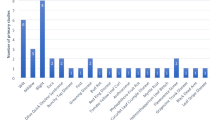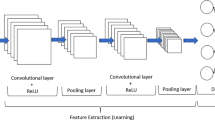Abstract
The automated detection and classification of plant diseases based on images of leaves is a significant milestone in agriculture. Due to the increasing popularity of digital image processing, machine learning, and computer vision techniques, it has been proposed that these could be used for the early detection of diseases. However, the accuracy of these techniques is still considered to be a challenge. In this paper, the concept of deep learning was used to identify and predict cotton plant disease status using images of leaves and plants collected in an uncontrolled environment. This paper focuses on solving the problem of cotton plants disease detection and classification using an improved Deep Convolution Neural Network based model. Three different experimental configurations were investigated to study the impacts of different data split ratios, different choices of pooling layer (max-pooling vs. average-pooling), and epoch sizes. The models were trained using a database of 2293 images of cotton leaves and plants. The data included four distinct classes of leaves, plant disease combinations, and their respective categories. For classifying leaves and plant diseases in cotton plants, our model attained an accuracy of 97.98%. The proposed technique outperformed the recent approaches indicated in earlier literature for relevant parameters. As a result, the technique is intended to reduce the time spent identifying cotton leaf disease in significant production regions and human error and the time spent determining its severity.










Similar content being viewed by others
Data availability
The dataset and the source code that support the findings of this study are available from the corresponding author, upon reasonable request.
References
Azath M, Zekiwos M, Bruck A (2021) Deep learning-based image processing for cotton leaf disease and Pest diagnosis. J Electr Comput Eng 2021. https://doi.org/10.1155/2021/9981437
Caldeira RF, Santiago WE, Teruel B (2021) Identification of cotton leaf lesions using deep learning techniques. Sensors 21. https://doi.org/10.3390/s21093169
Chaudhary P, Chaudhari AK, Cheeran AN, Godara S (2012) Color transform based approach for disease spot detection on plant leaf. Int J Comput Sci Telecommun 3:4–9
Chockalingam SMM (2015) A profile of Indian cotton: at a glance. 1–6
D3v (2020) Cotton Disease Dataset. https://www.kaggle.com/datasets/janmejaybhoi/cotton-disease-dataset
da Silva LA, Bressan PO, Gonçalves DN, Freitas DM, Machado BB, Gonçalves WN (2019) Estimating soybean leaf defoliation using convolutional neural networks and synthetic images. Comput Electron Agric 156:360–368. https://doi.org/10.1016/j.compag.2018.11.040
Dande SC, Agrawal SS, Hirekhan SR (2016) Implementation of colour image steganography using LSB and edge detection technique: a LabVIEW approach. Int Conf Commun Sig Proc, ICCSP 2016:1466–1470. https://doi.org/10.1109/ICCSP.2016.7754401
Das S, Saha SK (2022) Diabetic retinopathy detection and classification using CNN tuned by genetic algorithm. Multimed Tools Appl 81:8007–8020. https://doi.org/10.1007/s11042-021-11824-w
Esgario JGM, Krohling RA, Ventura JA (2020) Deep learning for classification and severity estimation of coffee leaf biotic stress. Comput Electron Agric 169. https://doi.org/10.1016/j.compag.2019.105162
Ferentinos KP (2018) Deep learning models for plant disease detection and diagnosis. Comput Electron Agric 145:311–318. https://doi.org/10.1016/j.compag.2018.01.009
Geetharamani G, Pandian A (2019) Identification of plant leaf diseases using a nine-layer deep convolutional neural network. Comput Electr Eng 76:323–338. https://doi.org/10.1016/j.compeleceng.2019.04.011
Gupta H, Pahuja R (2019) Estimating Morphological Features of Plant Growth Using Machine Vision 10. https://doi.org/10.4018/IJAEIS.2019070103
Hati S, G S (2013) Plant recognition from leaf image through artificial neural network. Int J Comput Appl 62:15–18. https://doi.org/10.5120/10172-4897
Hawkins DM (2004) The problem of overfitting. J Chem Inf Comput Sci 44:1–12. https://doi.org/10.1021/ci0342472
Jagtap SB, Hambarde SM (2014) Agricultural Plant Leaf Disease Detection and Diagnosis Using Image Processing Based on Morphological Feature Extraction 4:24–30
Jiang P, Chen Y, Liu B, He D, Liang C (2019) Real-time detection of apple leaf diseases using deep learning approach based on improved convolutional neural networks. IEEE Access 7:59069–59080. https://doi.org/10.1109/ACCESS.2019.2914929
Kaur S, Aggarwal H, Rani R (2021) Diagnosis of Parkinson’s disease using deep CNN with transfer learning and data augmentation. Multimed Tools Appl 80:10113–10139. https://doi.org/10.1007/s11042-020-10114-1
Krizhevsky A, Hinton GE (2012) ImageNet classification with deep convolutional neural networks. In NIPS 1–9
Kumar Rai C, Pahuja R, Kumar Chabbra J (2022) Implementation of virtual instrumentation system for estimation of eaten leaf area using digital image processing. International conference on image information processing (ICIIP) 472–476. https://doi.org/10.1109/iciip53038.2021.9702652
Kumar R, Tiwari RK, Jeevalatha A, Siddappa S, Shah MA, Sharma S, Sagar V, Kumar M, Chakrabarti SK (2021) Potato apical leaf curl disease: current status and perspectives on a disease caused by tomato leaf curl New Delhi virus. J Plant Dis Protect 128:897–911. https://doi.org/10.1007/s41348-021-00463-w
Kutty SB, Abdullah NE, Hashim H, et al (2013) Classification of watermelon leaf diseases using neural network analysis. BEIAC 2013–2013 IEEE Business Engineering and Industrial Applications Colloquium 459–464. https://doi.org/10.1109/BEIAC.2013.6560170
Lee SH, Chan CS, Wilkin P, Remagnino P (2015) Deep-plant: Plant identification with convolutional neural networks. Proceedings - International Conference on Image Processing, ICIP 2015-Decem:452–456. https://doi.org/10.1109/ICIP.2015.7350839
Ma J, Du K, Zheng F et al (2018) A recognition method for cucumber diseases using leaf symptom images based on deep convolutional neural network. Comput Electron Agric 154:18–24. https://doi.org/10.1016/j.compag.2018.08.048
Mallick MT, Biswas S, Das AK, et al (2022) Deep learning based automated disease detection and pest classification in Indian mung bean. Multimed Tools Appl. https://doi.org/10.1007/s11042-022-13673-7
Mohanty SP, Hughes DP, Salathé M (2016) Using deep learning for image-based plant disease detection. Front Plant Sci 7:1–10. https://doi.org/10.3389/fpls.2016.01419
Ozguven MM, Adem K (2019) Automatic detection and classification of leaf spot disease in sugar beet using deep learning algorithms. Physica A: Statistical Mech Appl 535:122537. https://doi.org/10.1016/j.physa.2019.122537
Parikh A, Raval MS, Parmar C, Chaudhary S (2016) Disease detection and severity estimation in cotton plant from unconstrained images. Proceedings - 3rd IEEE International conference on data science and advanced analytics, DSAA 2016 594–601. https://doi.org/10.1109/DSAA.2016.81
Patki SS, Sable GS (2016) Cotton Leaf Disease Detection & Classification using multi SVM. Int J Adv Res Comput Commun Eng 5:165–168. https://doi.org/10.17148/IJARCCE.2016.51034
Rajasekar V, Venu K, Jena SR et al (2022) Detection of cotton plant diseases using deep transfer learning. J Mob Multimed 18:307–324. https://doi.org/10.13052/jmm1550-4646.1828
Revathi P, Hemalatha M (2014) Classification of cotton leaf spot diseases using image processing edge detection techniques. IEEE Proceedings of the INternational Conference On Emerging Trends in Science Engineering and Technology: Recent Advancements on Science and Engineering Innovation, INCOSET 2012 169–173. https://doi.org/10.1109/incoset.2012.6513900
Rothe PR, Kshirsagar RV. (2015) Cotton leaf disease identification using pattern recognition techniques. 2015 International conference on pervasive computing: advance communication technology and application for society, ICPC 2015 00:3–8. https://doi.org/10.1109/PERVASIVE.2015.7086983
Şekeroǧlu B, Inan Y (2016) Leaves recognition system using a neural network. Procedia Comput Sci 102:578–582. https://doi.org/10.1016/j.procs.2016.09.445
Sengar N, Dutta MK, Travieso CM (2018) Computer vision based technique for identification and quantification of powdery mildew disease in cherry leaves. Computing 100:1189–1201. https://doi.org/10.1007/s00607-018-0638-1
Shrivastava S, Singh SK, Hooda DS (2015) Color sensing and image processing-based automatic soybean plant foliar disease severity detection and estimation. Multimed Tools Appl 74:11467–11484. https://doi.org/10.1007/s11042-014-2239-0
Sivasangari A, Priya K, Indira K (2017) Cotton leaf disease detection and recovery using genetic algorithm. Int J Pure Appl Mathe 117:119–124
Sun J, Yang Y, He X, Wu X (2020) Northern maize leaf blight detection under complex field environment based on deep learning. IEEE Access 8:33679–33688. https://doi.org/10.1109/ACCESS.2020.2973658
Thangaraj R, Anandamurugan S, Kaliappan VK (2021) Automated tomato leaf disease classification using transfer learning-based deep convolution neural network. J Plant Dis Protect 128:73–86. https://doi.org/10.1007/s41348-020-00403-0
Vallabhajosyula S, Sistla V, Kolli VKK (2021) Transfer learning-based deep ensemble neural network for plant leaf disease detection. J Plant Dis Protect 129:545–558. https://doi.org/10.1007/s41348-021-00465-8
Vishnoi VK, Kumar K, Kumar B (2021) A comprehensive study of feature extraction techniques for plant leaf disease detection. Springer US
Wang G, Sun Y, Wang J (2017) Automatic image-based plant disease severity estimation using deep learning. Comput Intel Neurosci 2017:1–8. https://doi.org/10.1155/2017/2917536
Wankhade DS (2017) Classification of diseases on the leaves of cotton using generalized feed forward (Gff) neural network. 5:182–188
Xiao BX, Wang CY, Guo XY, Wu S (2014) Image acquisition system for agricultural context-aware computing. Int J Agricult Biolog Eng 7:75–80. https://doi.org/10.3965/j.ijabe.20140704.008
Zhang X, Qiao YUE, Meng F, Fan C, Zhang M (2018) Identification of maize leaf diseases using improved deep convolutional neural networks. IEEE Access 6:30370–30377. https://doi.org/10.1109/ACCESS.2018.2844405
Zhou G, Zhang W, Chen A, He M, Ma X (2019) Rapid detection of Rice disease based on FCM-KM and faster R-CNN fusion. IEEE Access 7:143190–143206. https://doi.org/10.1109/ACCESS.2019.2943454
Zhu J, Wu A, Wang X, Zhang H (2020) Identification of grape diseases using image analysis and BP neural networks. Multimed Tools Appl 79:14539–14551. https://doi.org/10.1007/s11042-018-7092-0
Funding
Not applicable.
Author information
Authors and Affiliations
Contributions
Model Development and writing of original draft and preparation: Chitranjan Kumar Rai; review, editing and supervision: Roop Pahuja.
Corresponding author
Ethics declarations
Ethical approval
Not applicable.
Consent to participate and consent to publish
I hereby transfer the unlimited rights of publication of the above-mentioned paper in whole to the Multimedia Tools and Applications.
Conflict of interest
On behalf of all authors, the corresponding author states that there is no conflict of interest.
Additional information
Publisher’s note
Springer Nature remains neutral with regard to jurisdictional claims in published maps and institutional affiliations.
Rights and permissions
Springer Nature or its licensor (e.g. a society or other partner) holds exclusive rights to this article under a publishing agreement with the author(s) or other rightsholder(s); author self-archiving of the accepted manuscript version of this article is solely governed by the terms of such publishing agreement and applicable law.
About this article
Cite this article
Rai, C.K., Pahuja, R. Classification of Diseased Cotton Leaves and Plants Using Improved Deep Convolutional Neural Network. Multimed Tools Appl 82, 25307–25325 (2023). https://doi.org/10.1007/s11042-023-14933-w
Received:
Revised:
Accepted:
Published:
Issue Date:
DOI: https://doi.org/10.1007/s11042-023-14933-w




